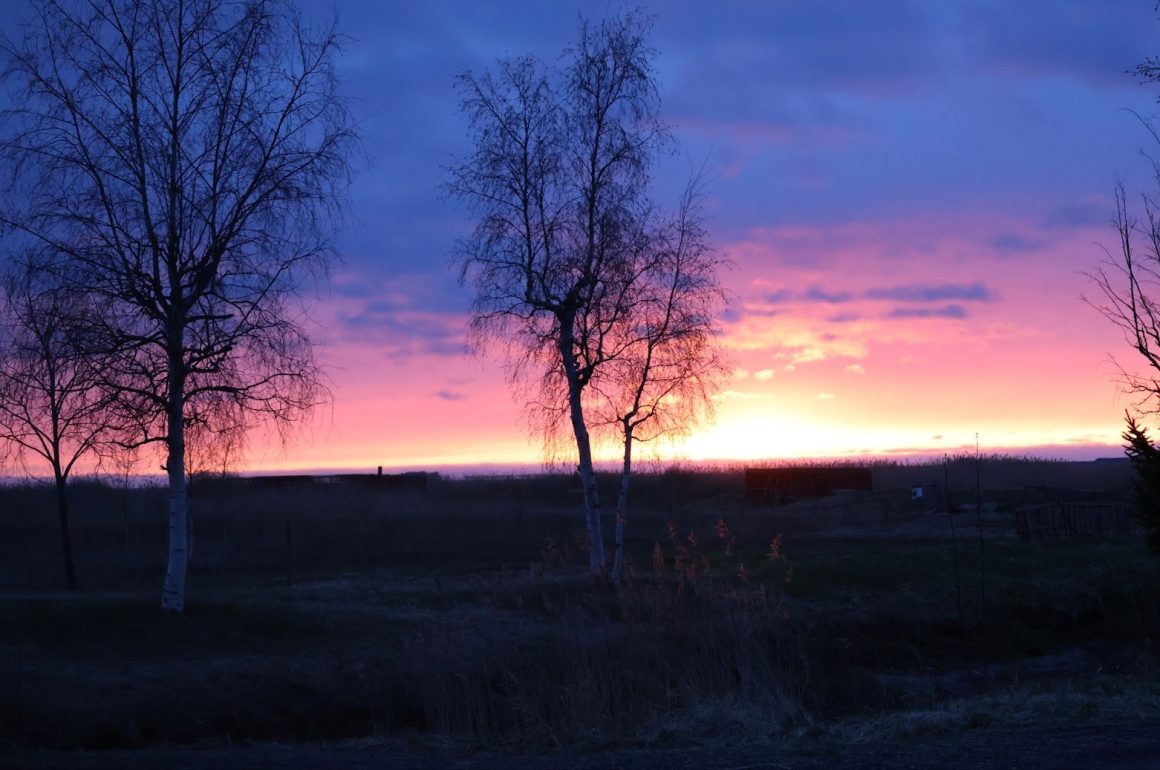
By Catherine Carroll
Cathy Carroll is a native Michigander, the Great Lakes state in the U.S., but became a birder in the Baltimore, Maryland, and Maryland’s Eastern Shore areas (the mid-Atlantic region) in the late 90’s. She was enticed by a birding friend to travel back to Michigan to see the Kirtland’s Warbler for her friend’s life list. She found the whole experience completely riveting and was hooked. Since that first experience, Cathy has seen Kirtland’s Warbler many times, each encounter as delightful as the first.. In 2006, Cathy took the opportunity to take her first birding trip abroad – to Cuba – and she has traveled widely since then. On her recent trip to Finland and Norway, she learned that she was the least well-traveled, by far, birder on the trip. That was a humbling awareness. Her style of birding now is to select a few special birds each year and try to see them. This fuels her ongoing interest in birds and the unrelenting issues that threaten them. This year, she missed seeing the Golden-winged Warbler by 18 hours.
For my recent birding trip to Finland and Norway, I arrived a day early to have a cushion against any flight hiccups that might occur, with the side benefit of getting a jump on dealing with jet lag.
Cathy in Finland in front of the Arctic Circle monument
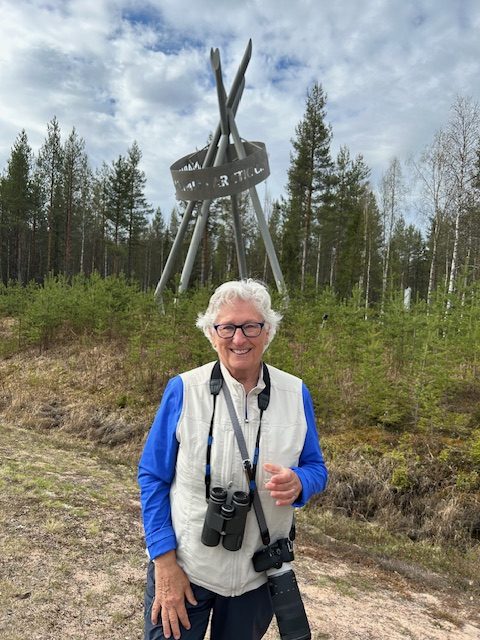
All of my flights ran smoothly, so I had a full day on my own to wander around the hotel and neighborhood. The Finlandia Airport Hotel near Oulu is located in Kempele on the Gulf of Bothnia, the northern arm of the Baltic Sea, which lies between Finland and Sweden. The grounds of the hotel were birdy and walkable and led to an attractive neighborhood and a small park on the bay. There was also a viewing platform looking out over the bay for sea watching. Though I didn’t know it on my first day, it turns out that Finland has quite a strong birding culture. Throughout the day, local birders carrying their spotting scopes made their way to the platform in hopes of seeing water and sea birds.
First night, around 11:00 pm, looking across the bay from the hotel. It never became fully dark.
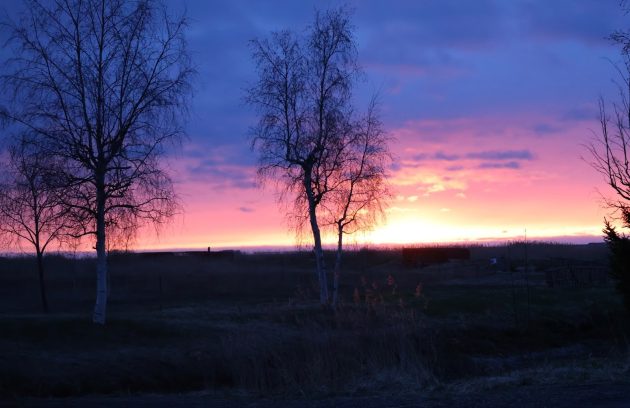
The official start of the trip was the late afternoon of Friday, May 23rd. We gathered in the lobby of the hotel for a brief meet and greet. Our guides, Nigel Redman with Rockjumper Birding Tours and Anttu Topp with Finnature, would be our guys for the next thirteen days. We were going to see a special bird that couldn’t wait. This was exciting. We piled into two vans and drove to a forest about forty minutes away. After unloading from the vans, we tromped about 800m to a spot in the forest and stopped. There it was, a nest box with an adult Boreal Owl (Aegolius funereus), in Europe known as Tengelman’s Owl, with its head poking from the entry hole and staring back at its intruders. I had always wanted to see a Boreal Owl, but considered that it was more likely I would not. The reason this opportunity couldn’t wait was because there was concern the youngsters would fledge, and we would miss our chance.
Were we hungry? Yes. Well, we had to wait. There was one more stop before returning to the hotel for dinner. It was impossible to know where we were going, but it took a while, and the area was beginning to look, well, industrial. We traveled down a narrow road, no other traffic in sight, surrounded by cinder-coated, fenced and gated parking lots where huge trucks, buses and other vehicles were parked. The area contained those large metal buildings that are so common in industrial areas. We stopped at a locked gate and, again, unloaded from the vans. The spotting scopes were produced and set up. We waited. An Oystercatcher flew in and landed along the road. As if the Oystercatcher wasn’t odd enough, suddenly, Anttu gave a shout, “Terek Sandpiper!” Sandpiper? Here? Everyone lined up behind the scopes. On the edge of the far side of the roof of the closest metal building was a shorebird with its distinctly upturned bill. Everyone got a couple of good looks through the scopes and then, just like that, it was gone. Terek Sandpiper (Xenus cinereus) is a Siberian breeder, and this is its only known breeding site in Finland. On the other side of the metal building, there was a snow melt pond where a couple of pairs continued to breed. Their numbers had once been greater, and they were then easier to see, but as the area changed and the habitat degraded, their numbers dwindled. Yet, they continue to hang on. The Terek is a rare visitor to western Alaska, and there are also a couple of lower 48 records. It was never on my radar as a bird I would see. So, this first night of birding produced two fantastic northern birds.
Now it was time to head back to the hotel for dinner. On the menu was excellently prepared Arctic char (Salvelinus alpinus), a cold freshwater fish native to the Arctic and subarctic regions, along with complimentary sides. I had never eaten Arctic char either and never expect to again – at least not like this first time. Finland is nicknamed “the land of a thousand lakes” – such an appropriate nickname for Finland, a truly beautiful country.
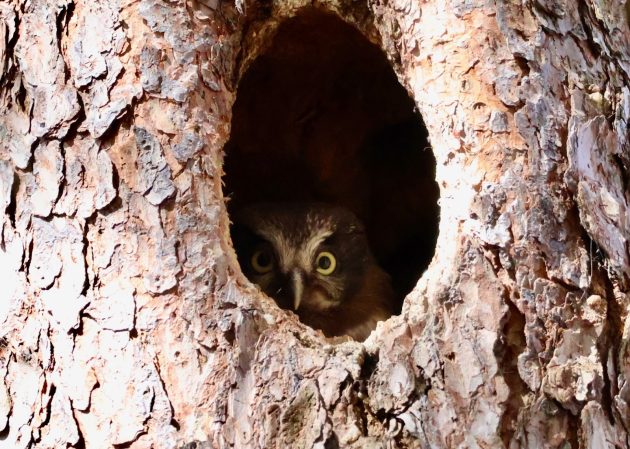
The very next day, we saw this Boreal Owl youngster, photo above, staring back at us from his nest cavity. Two Boreal Owls in two days. Before finding this guy, we had made a stop for a rare (in Finland) breeding Eurasian Eagle-owl (Bubo bubo).
I’ve always heard that the further north you go, the fewer birds you will see. Well, this is true if only the number of species is considered. When compared with the tropics, there are indeed fewer bird species. A true lister heads for the tropics; that’s where the money is – so to speak.
While the number of species may be fewer, our northern climes are greatly impacted by the migration of birds. Let’s use the example of Alaska, and its islands, in the spring for breeding birds, or Alaska in the autumn for rarities (when Terek Sandpiper is most likely to be found). Then the shorebirds, owls, ptarmigans, and seabirds are the easiest and most likely to be seen.. To truly see many of these birds, you will need to head north.
I’m not a lister, but I do love to see new birds. This was perfect for my recent Finland and Norway trip. There were plenty of new birds to see, and almost all may be birds I am unlikely to ever see again.


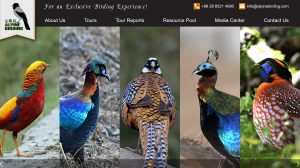
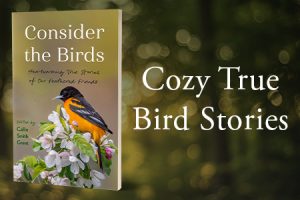

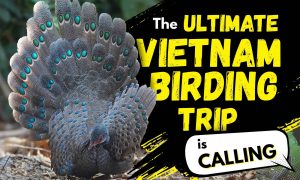
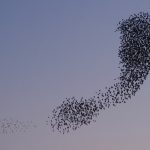
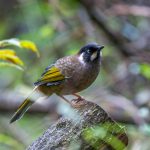

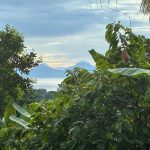
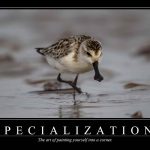
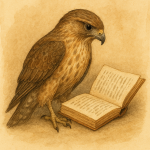
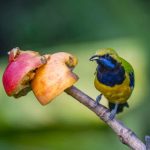
Oystercatchers breeding on flat roofs are becoming more commonplace – unfortunately the trend is not enough to offset the loss of meadow habitat.
Hi Peter, it was the Terek Sandpiper on the roof. Funny. In Finland and Norway both, Oystercatchers were everywhere. I wouldn’t be surprised to find them nesting just about anywhere. In Batsfjord harbor one was nesting at the road edge.